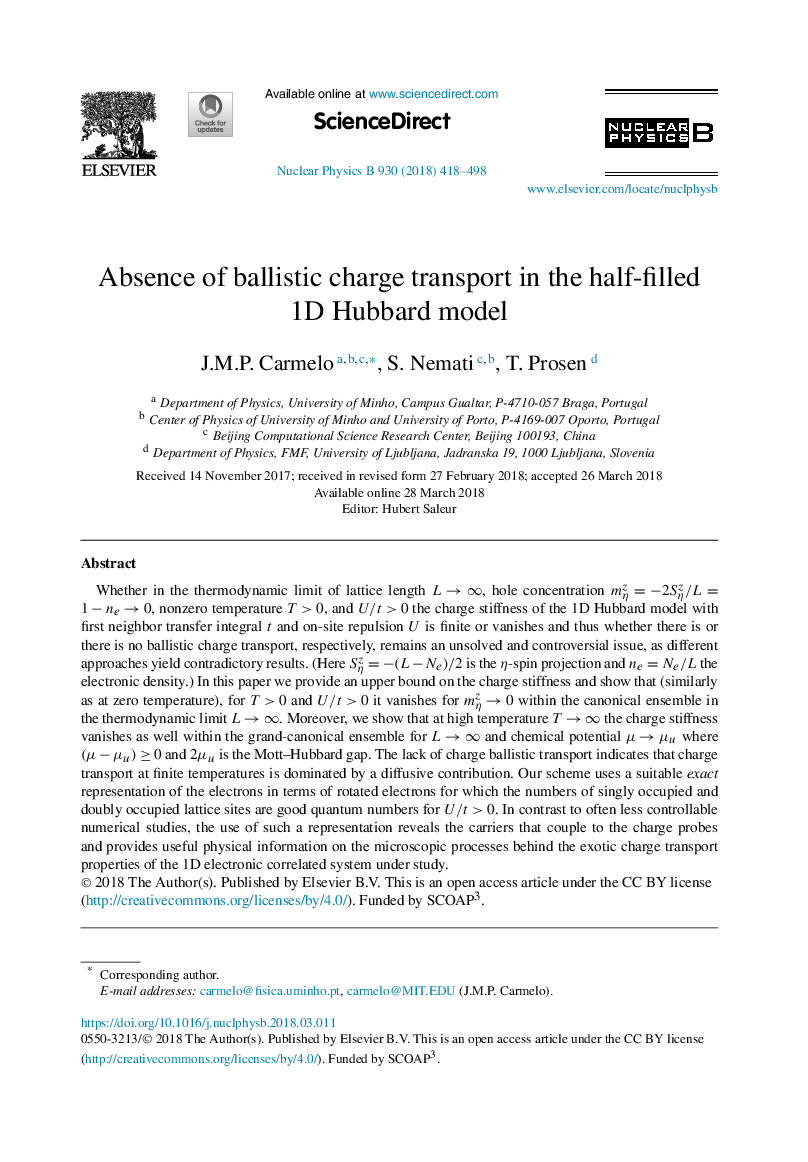| Article ID | Journal | Published Year | Pages | File Type |
|---|---|---|---|---|
| 8184988 | Nuclear Physics B | 2018 | 81 Pages |
Abstract
Whether in the thermodynamic limit of lattice length Lââ, hole concentration mηz=â2Sηz/L=1âneâ0, nonzero temperature T>0, and U/t>0 the charge stiffness of the 1D Hubbard model with first neighbor transfer integral t and on-site repulsion U is finite or vanishes and thus whether there is or there is no ballistic charge transport, respectively, remains an unsolved and controversial issue, as different approaches yield contradictory results. (Here Sηz=â(LâNe)/2 is the η-spin projection and ne=Ne/L the electronic density.) In this paper we provide an upper bound on the charge stiffness and show that (similarly as at zero temperature), for T>0 and U/t>0 it vanishes for mηzâ0 within the canonical ensemble in the thermodynamic limit Lââ. Moreover, we show that at high temperature Tââ the charge stiffness vanishes as well within the grand-canonical ensemble for Lââ and chemical potential μâμu where (μâμu)â¥0 and 2μu is the Mott-Hubbard gap. The lack of charge ballistic transport indicates that charge transport at finite temperatures is dominated by a diffusive contribution. Our scheme uses a suitable exact representation of the electrons in terms of rotated electrons for which the numbers of singly occupied and doubly occupied lattice sites are good quantum numbers for U/t>0. In contrast to often less controllable numerical studies, the use of such a representation reveals the carriers that couple to the charge probes and provides useful physical information on the microscopic processes behind the exotic charge transport properties of the 1D electronic correlated system under study.
Related Topics
Physical Sciences and Engineering
Mathematics
Mathematical Physics
Authors
J.M.P. Carmelo, S. Nemati, T. Prosen,
